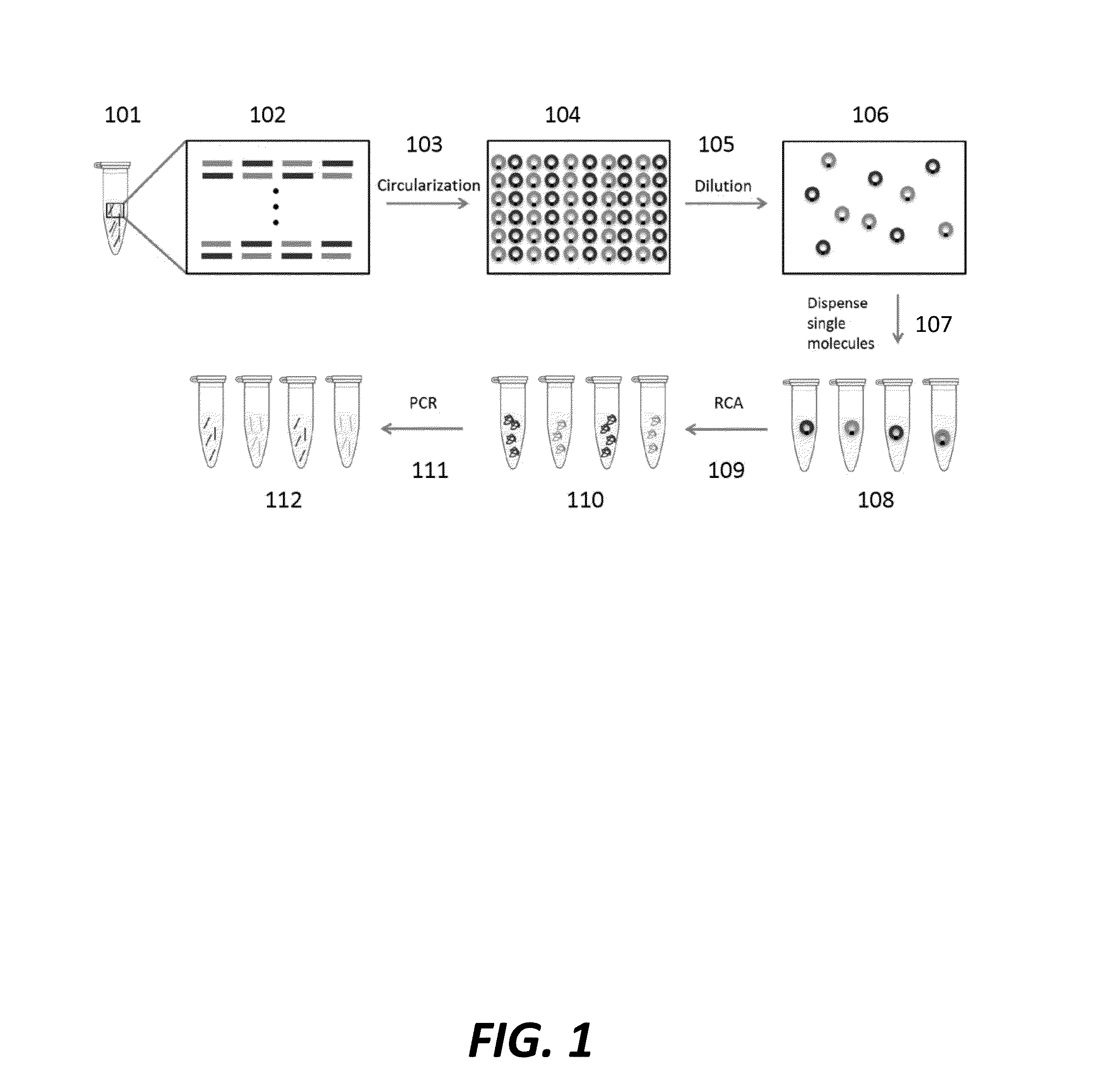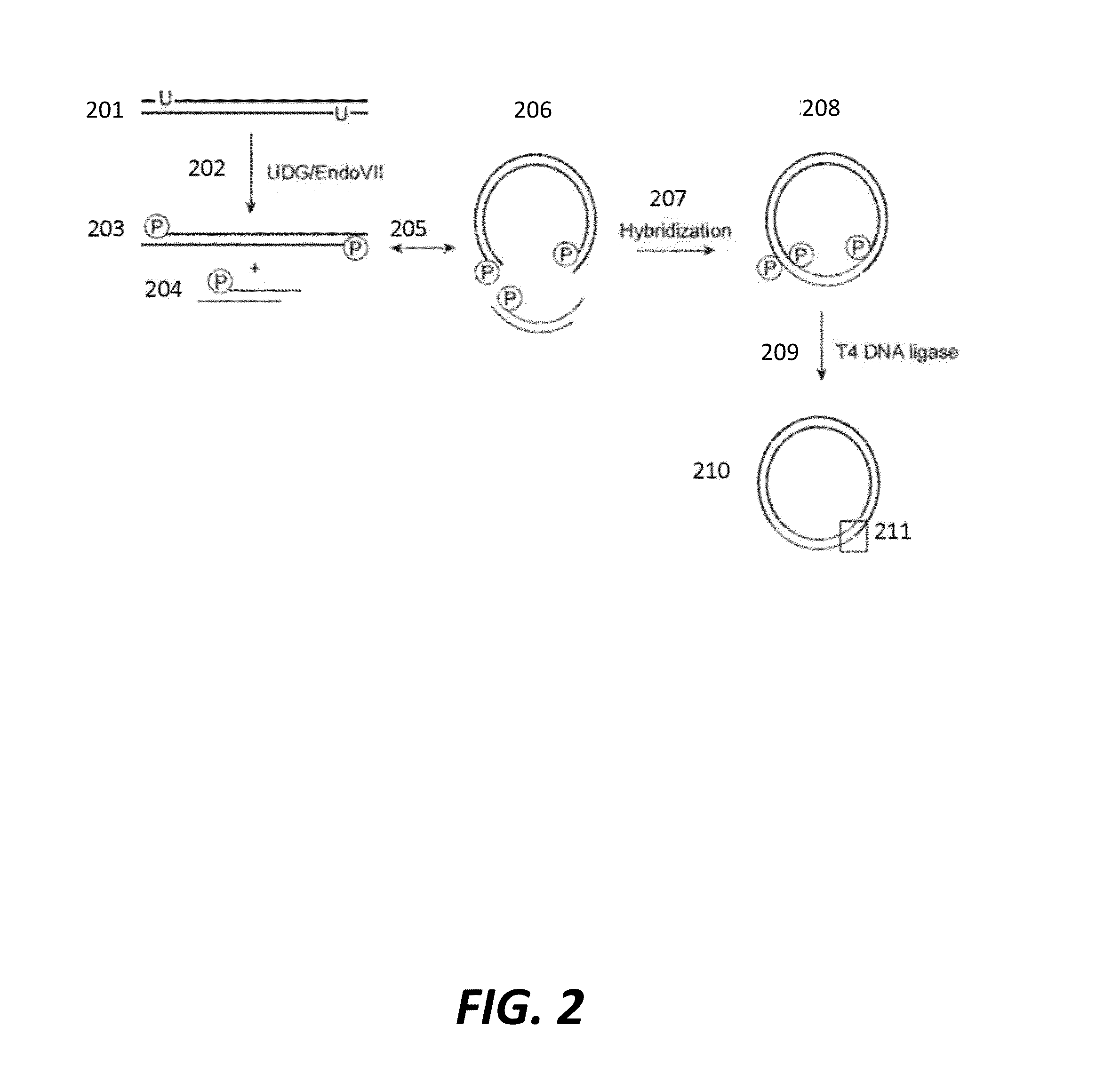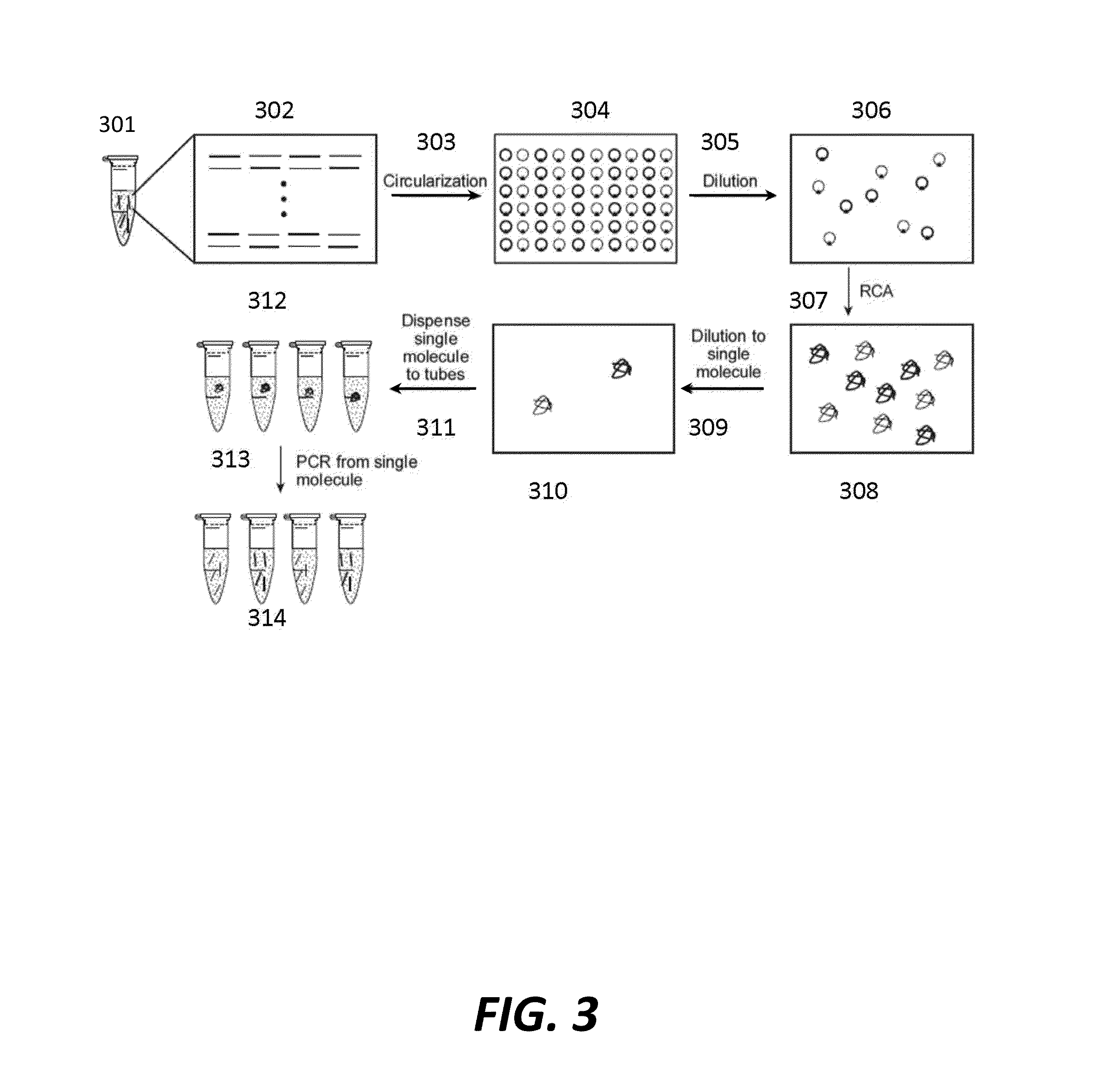Cell free cloning of nucleic acids
a nucleic acid and cell technology, applied in the field of cell free cloning of nucleic acids, can solve the problems of scalability, automation, speed, accuracy, cost, and the inability to efficiently sort and clone error free nucleic acid sequences, and achieve the effect of speeding up the efficiency of cloning, and reducing the number of errors
- Summary
- Abstract
- Description
- Claims
- Application Information
AI Technical Summary
Benefits of technology
Problems solved by technology
Method used
Image
Examples
example 1
Synthesis of a 100-Mer Oligonucleic Acid on a Substantially Planar Substrate
[0199]A substantially planar substrate functionalized for oligonucleic acid synthesis was assembled into a flow cell and connected to an Applied Biosystems ABI394 DNA Synthesizer. In one experiment, the substrate was uniformly functionalized with N-(3-triethoxysilylpropyl)-4-hydroxybutyramide. In another experiment, the substrate was functionalized with a 5 / 95 mix of 11-acetoxyundecyltriethoxysilane and N-decyltriethoxysilane. Synthesis of 100-mer oligonucleic acids (“100-mer oligonucleotide”; 5′CGGGATCCTTATCGTCATCGTCGTACAGATCCCGACCCATTTGCTGTCCACCAGTC ATGCTAGCCATACCATGATGATGATGATGATGAGAACCCCGCAT##TTTTTTTTTT3′ (SEQ ID NO.: 1), where # denotes Thymidine-succinyl hexamide CED phosphoramidite (CLP-2244 from ChemGenes)) were performed using the methods of Table 1.
TABLE 1Table 1. Method for oligonucleic acid synthesis.General DNA SynthesisProcess NameProcess StepTime (sec)WASH (Acetonitrile WashAcetonitrile System...
example 2
Gene Assembly in Reactors Using PCA
[0202]Gene assembly within nanoreactors created using a three-dimensional substrate was performed. PCA reactions were performed using oligonucleic acids described in Table 4 (SEQ ID NOs: 2-61) to assemble the 3075 base LacZ gene (SEQ ID NO.: 62) using the reaction mixture of Table 5 within individual nanoreactors.
TABLE 4Oligonucleic acid sequences(Sequence ID NOs.: 2-61) forgenerating an assembled LacZ geneproduct (SEQ ID NO.: 62) by PCA.Sequence NameSequenceOligo 1,5′ATGACCATGATTACGGATTCACTGGCSEQ ID NO.: 2CGTCGTTTTACAACGTCGTGACTGGGAAAACCCTGG3′Oligo 2,5′GCCAGCTGGCGAAAGGGGGATGTGCTSEQ ID NO.: 3GCAAGGCGATTAAGTTGGGTAACGCCAGGGTTTTCCCAGTCACGAC3′Oligo 3,5′CCCCCTTTCGCCAGCTGGCGTAATAGSEQ ID NO.: 4CGAAGAGGCCCGCACCGATCGCCCTTCCCAACAGTTGCGCAGCC3′Oligo 4,5′CGGCACCGCTTCTGGTGCCGGAAACCSEQ ID NO.: 5AGGCAAAGCGCCATTCGCCATTCAGGCTGCGCAACTGTTGGGA3′Oligo 5,5′CACCAGAAGCGGTGCCGGAAAGCTGGSEQ ID NO.: 6CTGGAGTGCGATCTTCCTGAGGCCGATACTGTCGTCGTCCCCTC3′Oligo 6,5′GATAGGTCACGTTGGTGTAGA...
example 3
Cell-Free Sorting and Cloning of Heterogeneous Sequence Populations
[0204]A sample of double-stranded target nucleic acids with heterogeneous sequence populations was partitioned using cell-free cloning to separate the target nucleic acids by sequence. The sample comprised a synthesized gene fragment construct comprising a population of nucleic acids having a predetermined sequence and one or more nucleic acids having sequences that differed from the predetermined nucleic acid sequence by one or more bases. The construct was purchased as a single gBlock from IDT. The predetermined sequence is indicated by SEQ ID NO.: 65:
5′CAGCAGTTCCTCGCTCTTCTCACGACGAGTTCGACATCAACAAGCTGCGCTACCACAAGATCGTGCTGATGGCCGACGCCGATGTTGACGGCCAGCACATCGCAACGCTGCTGCTCACCCTGCTTTTCCGCTTCATGCCAGACCTCGTCGCCGAAGGCCACGTCTACTTGGCACAGCCACCTTTGTACAAACTGAAGTGGCAGCGCGGAGAGCCAGGATTCGCATACTCCGATGAGGAGCGCGATGAGCAGCTCAACGAAGGCCTTGCCGCTGGACGCAAGATCAACAAGGACGACGGCATCCAGCGCTACAAGGGTCTCGGCGAGATGAACGCCAGCGAGCTGTGGGAAACCACCATGGACCCAACT...
PUM
 Login to View More
Login to View More Abstract
Description
Claims
Application Information
 Login to View More
Login to View More - R&D
- Intellectual Property
- Life Sciences
- Materials
- Tech Scout
- Unparalleled Data Quality
- Higher Quality Content
- 60% Fewer Hallucinations
Browse by: Latest US Patents, China's latest patents, Technical Efficacy Thesaurus, Application Domain, Technology Topic, Popular Technical Reports.
© 2025 PatSnap. All rights reserved.Legal|Privacy policy|Modern Slavery Act Transparency Statement|Sitemap|About US| Contact US: help@patsnap.com



